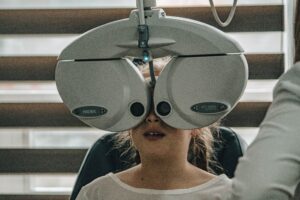Children’s Vision Pathway
In Leeds, practices and practitioners who have an interest in and are equipped to examine 4-5 year olds, can receive referrals from the School Primary Visual Screening Programme.
Participating Optometrists will receive referrals from the school nurse in the form of a letter brought to them by the parent/guardian.
At the initial appointment a full eye test including fundus examination, refraction (cycloplegic where clinically indicated) and routine binocular vision tests are carried out.
See the links below for the pathway documentation, service protocol and reporting requirements.
For a current list of participating practices click here.
Children’s referrals
1. Routine non-urgent – any of the following
A) Email to leedsth-tr.GP-Referrals@nhs.net
B) Post to:
Referral booking service
St James Hospital
Ground Floor- Room 12 Ashley Wing
LS9 7TF
2. Urgent
Refer via PCAL – See Urgent Ophthalmology referrals
This is NOT advised if suspected papilloedema is an incidental finding and no symptoms.
If nausea, headache and blurred discs request same day to LGI paeds A&E.
Children with Low Vison
A recent multidisciplinary meeting of people working in visual impairment has heard that many children are slipping through the net and not being brought to the attention of Education Officers.The Education Leeds Visually Impaired Team consists of teachers trained in the teaching of visually impaired children and young people. They provide support at home and at school from birth to school leaving age.
If the child does not fall within the Education Leeds Catchment they will still take the details and pass them on to the relevant authority.
Optometrists are urged to take note of the services available, the referral criteria (below) and forward the children’s names to Education Leeds, even if they are under the HES.
Referral Criteria for Involvement (one or more sufficient)
The child should
1. Present an identifiable ophthalmic condition which has the potential to interfere with development and learning
2. Distance acuity of 6/18 or worse
3. Near acuity of N14 or worse
4. A restriction in the field of vision
5. Problems in scanning, depth perception, tracking, colour perception, hand-eye coordination or contrast sensitivity
Additional information
